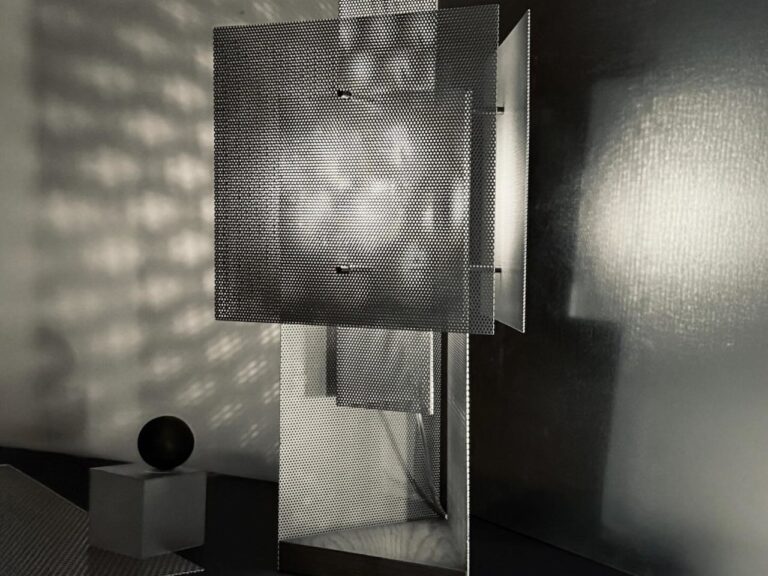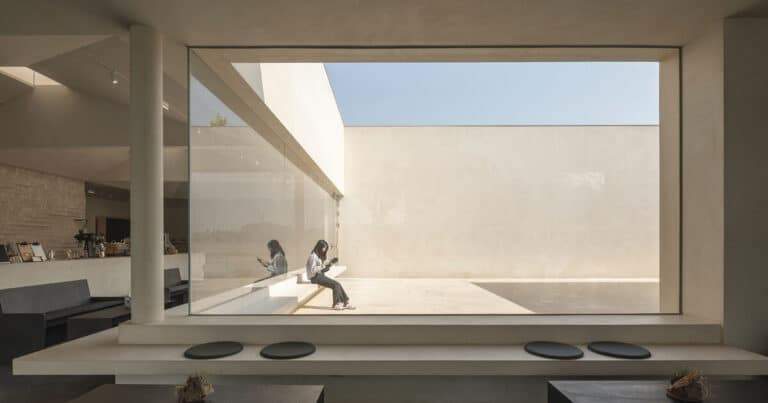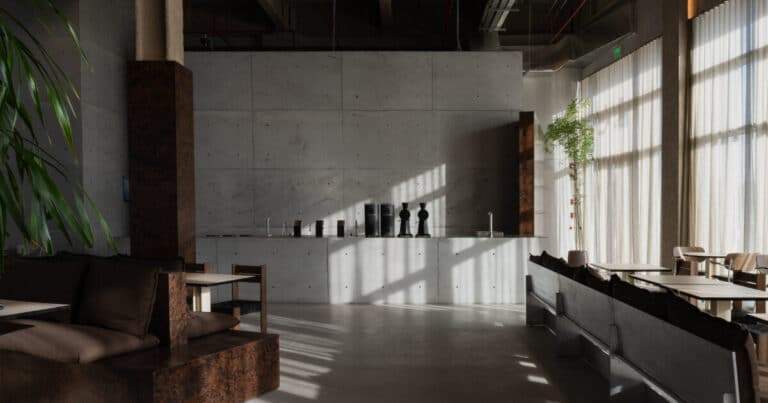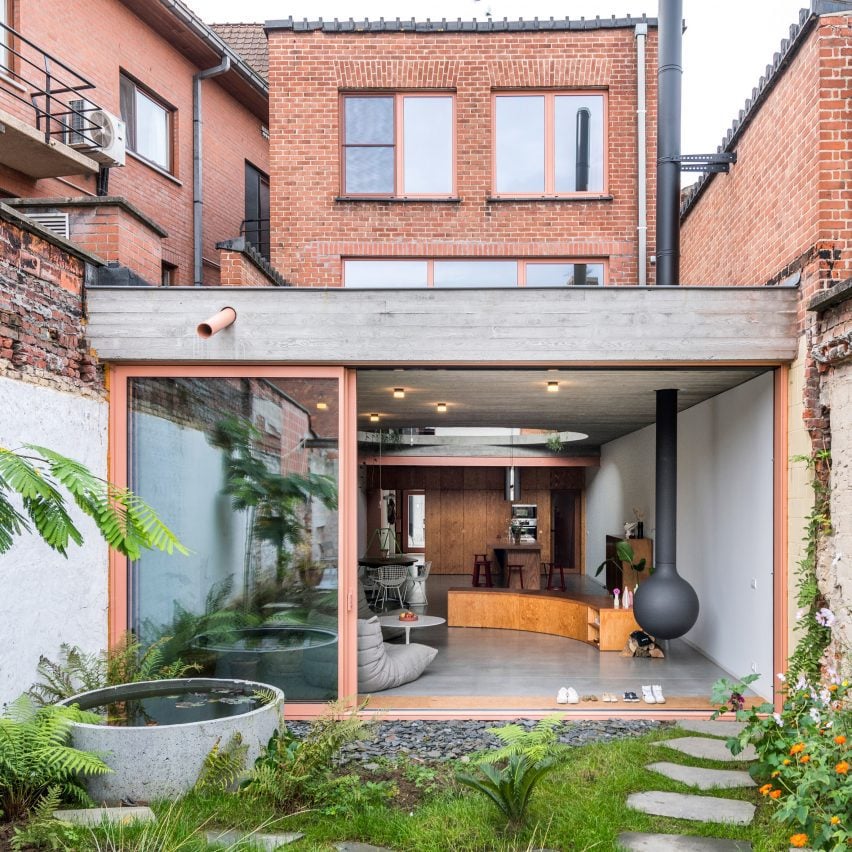Madrid Mosaic Store: Aesop by Ciszak Dalmas
Introduction
Nestled in a 19th-century Almagro building, the Madrid Mosaic Store reinterprets Aesop’s minimalist philosophy through locally rooted craftsmanship and historic context. The space is organized around four restored cast-iron columns—a structural homage to Madrid’s architectural past. These vertical anchors define a 120 m² canvas transformed by ciszak dalmas and Matteo Ferrari into a sensory retail journey. Rich ceramic trencadís mosaics, echoing Gaudí’s legacy, span floors, walls, and counters, creating warmth and visual rhythm in contrast to crisp glass screens and utilitarian shelving.
Each material—Spanish Silvestre granito, Alpi walnut burl, Cathedral glass—was chosen to resonate with local tradition while enabling light and texture to shape the experience. Natural light filters through hammered glass partitions, animating surfaces and products in ethereal ways. The store balances openness with intimacy, forging a connection between Madrid’s heritage and Aesop’s contemporary ethos. The careful layering of craft, transparency, and structure offers not just retail, but architecture in dialogue with place.
For anyone looking for a reliable and up-to-date architectural resource, ArchUp offers fresh content covering projects, design, and competitions.

Heritage in Structure
The project began with rediscovered cast-iron columns, typical of late-19th-century Madrid. Reintegrated into the layout, these four vertical elements anchor the floor plan, dividing zones yet maintaining openness. Their historical presence introduces depth and authenticity—an architectural memory that grounds the modern interventions.
Material Palette & Craft
- Trencadís mosaics: Deep reds cover 60 m² of floor and rise along walls and countertops.
- Silvestre granito & walnut burl: Sinks, plinths, and counters utilize tactile woods and warm stone.
- Cathedral glass: Hammered panels create semipermeable screens to service areas.
This material trio—textured ceramics, wood grain, and translucent glass—shapes a multisensory environment where form, light, and tactility work in harmony.



Spatial Flow & Retail Geometry
| Zone | Featured Material | Spatial Role & Experience |
|---|---|---|
| Entrance/Floor | Trencadís mosaic | Invites entry with warmth, sets visual rhythm |
| Sink island | Walnut burl & granite | Central focal point, craft centerpiece |
| Display Counters | Ceramic mosaic & wood | Blend functional shelving with ornamental detail |
| Corridor | Cathedral glass screen | Maintains daylight while subtly separating zones |
The store promotes intuitive navigation, guiding visitors through crafted intervals rather than rigid aisles.
Architectural Narrative
Ciszak Dalmas and Ferrari’s design challenges the standard retail aesthetic by embedding heritage and hands-on craftsmanship into everyday retail. Invoking Spanish modernism and Madrid’s columnar legacy, the store becomes a layered dialogue between past and present. It is more than a shop—it’s a curated spatial narrative where architecture and product coexist.
✦ ArchUp Editorial Insight
The Madrid Mosaic Store shows how retail can be a medium for architectural storytelling, not just transactions. By celebrating columnar heritage and mosaic craftsmanship, this shop transcends commercial function—it becomes a cultural artifact. For architects and designers, it demonstrates the power of integrating context, craft, and contemporary minimalism in commercial interiors.

Conclusion
The Madrid Mosaic Store distills architectural heritage into a tactile retail experience, weaving historical references—cast–iron columns, mosaic craft—with modern composure. It proposes a new model for design-led retail: one where space is layered with memory, materiality, and intention. In doing so, it redefines what a store can be: a place that sells products while telling stories through form and craft.
This project challenges the notion of retail interiors as purely functional. It invites architects to treat commercial spaces as sites for regenerative narratives—where the architecture itself is the product’s backdrop and storyteller.
Explore More with ArchUp
ArchUp documents the evolving profession of architects worldwide, from career insights and research to project profiles and industry news. Our editorial team publishes global salary trends, career advice, and opportunities for emerging talents. Learn more on our about page or contact us to collaborate.







